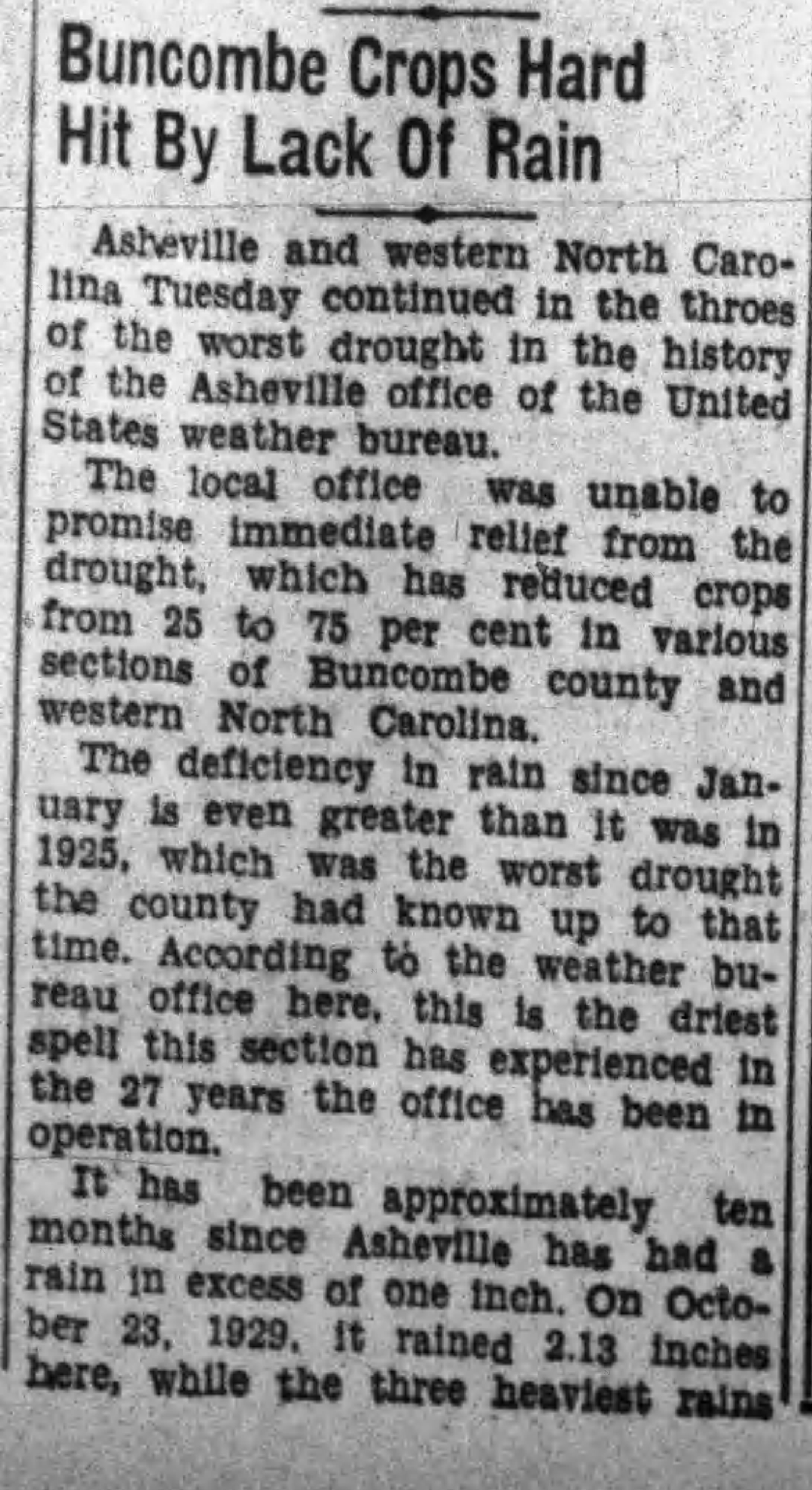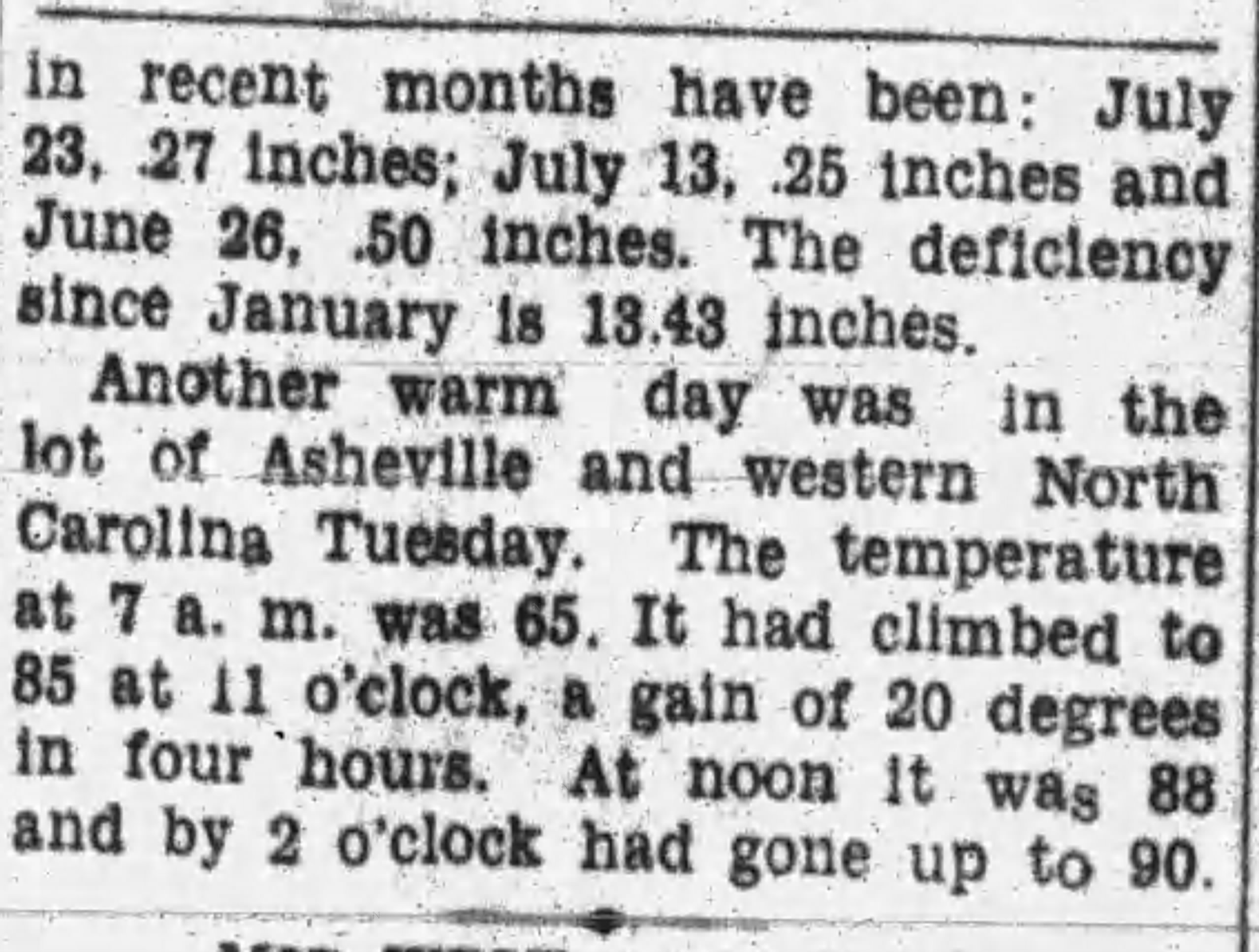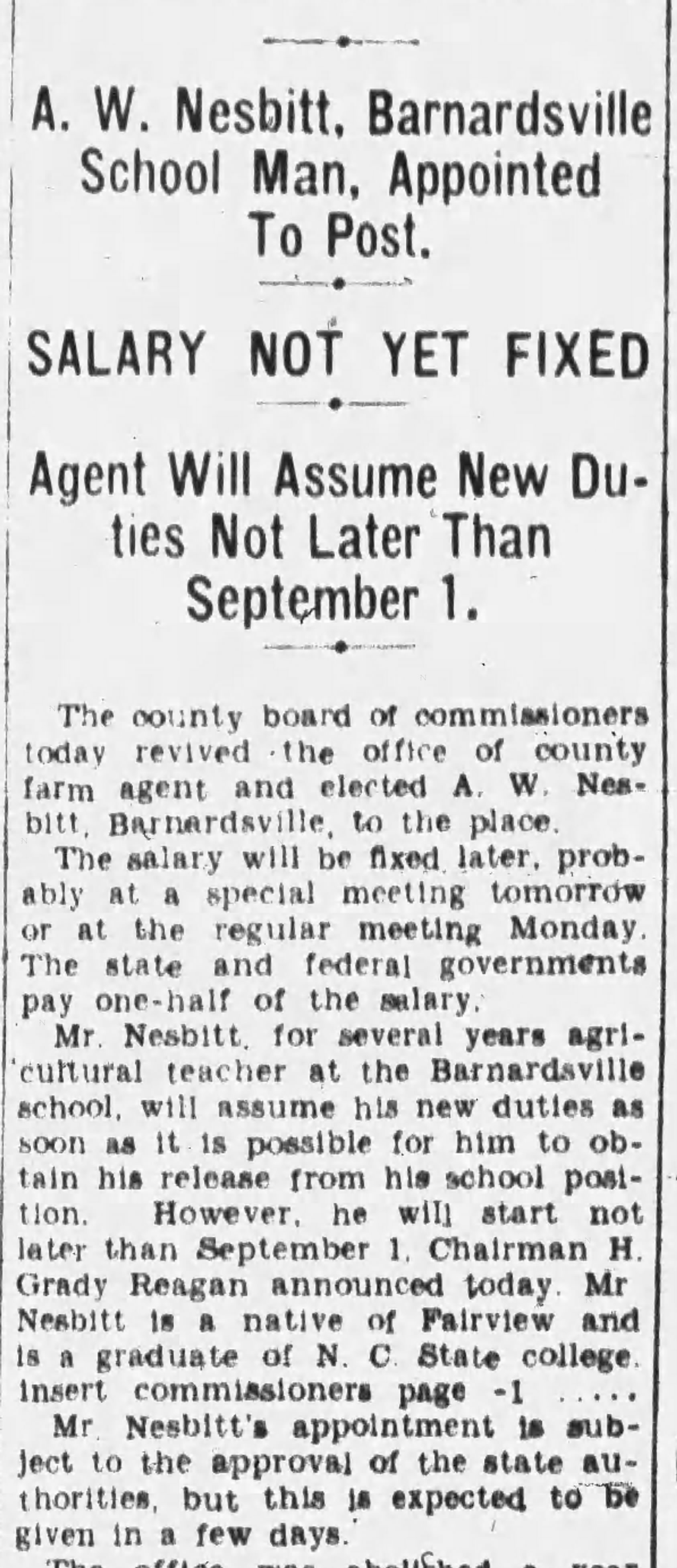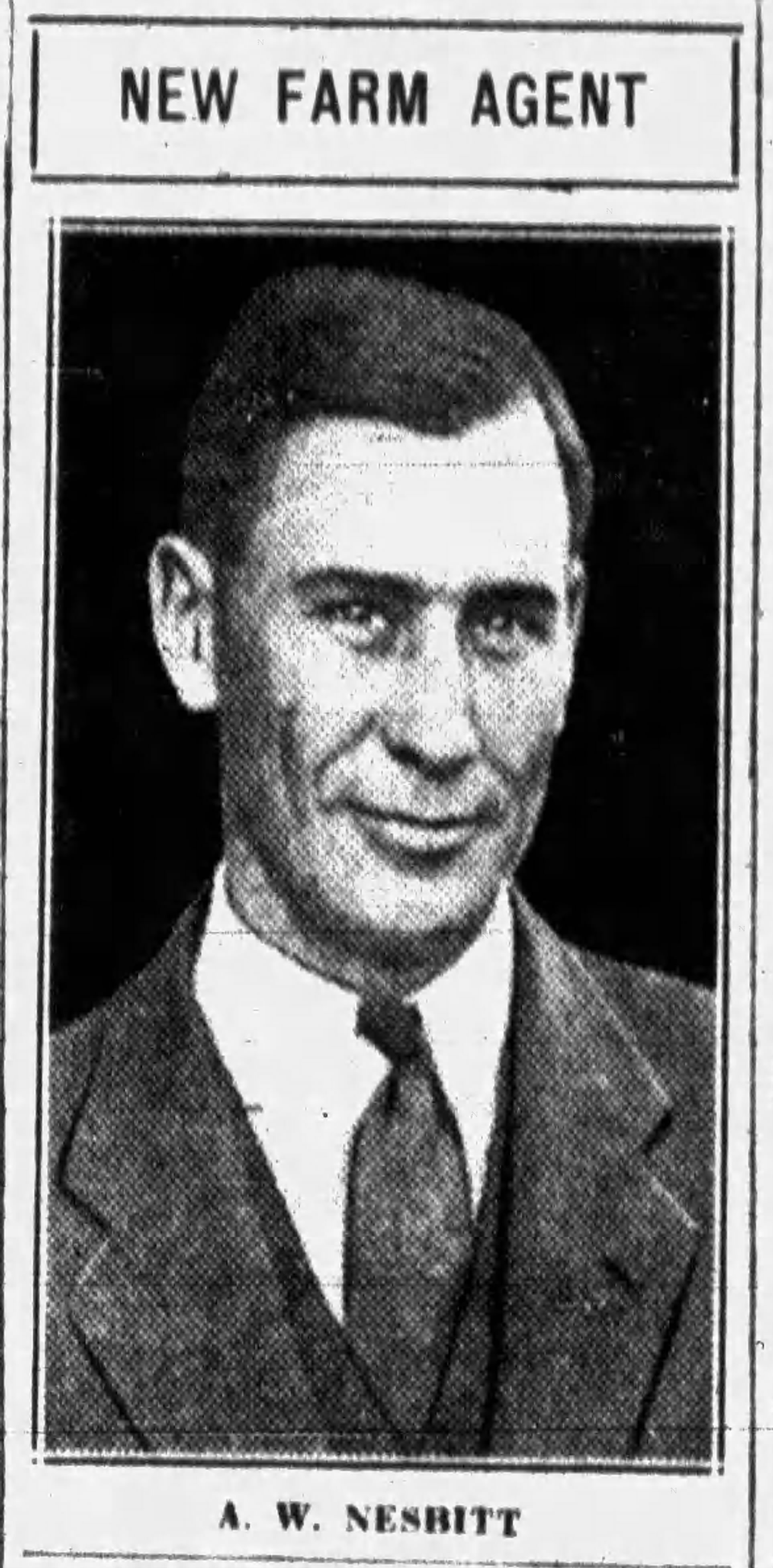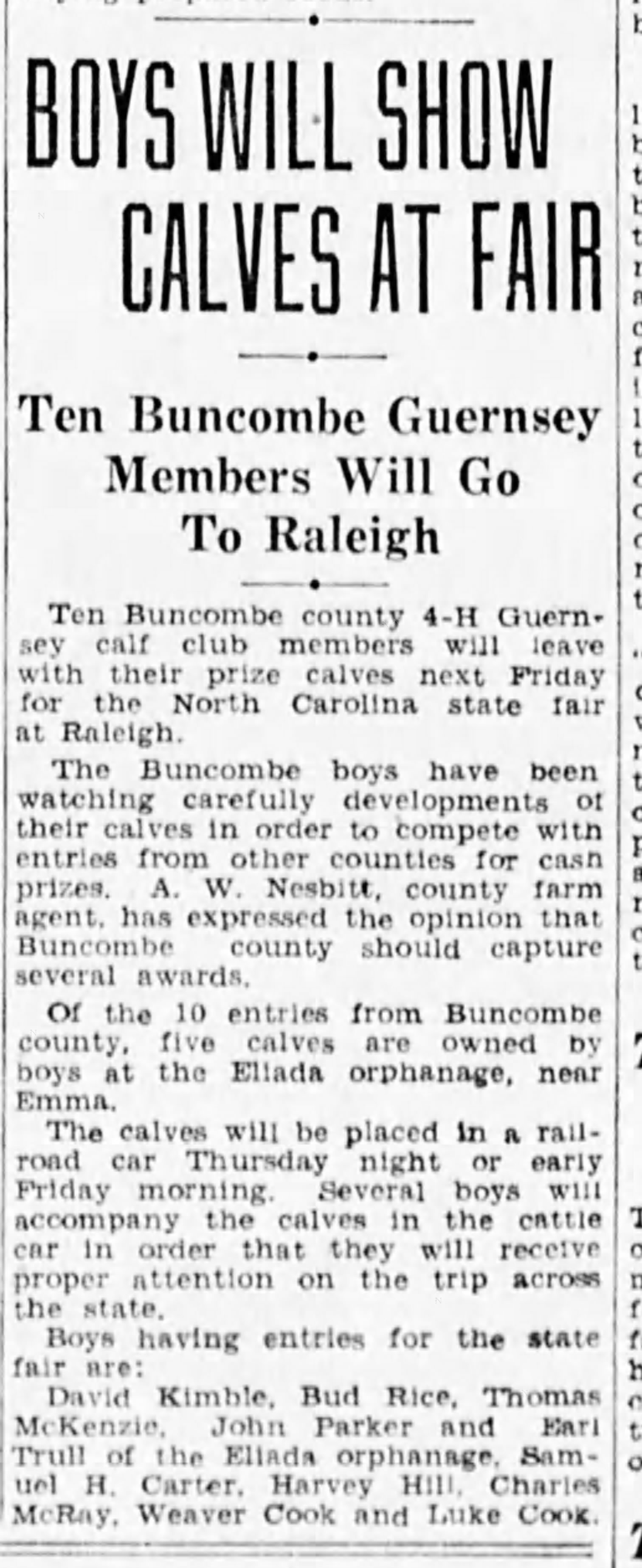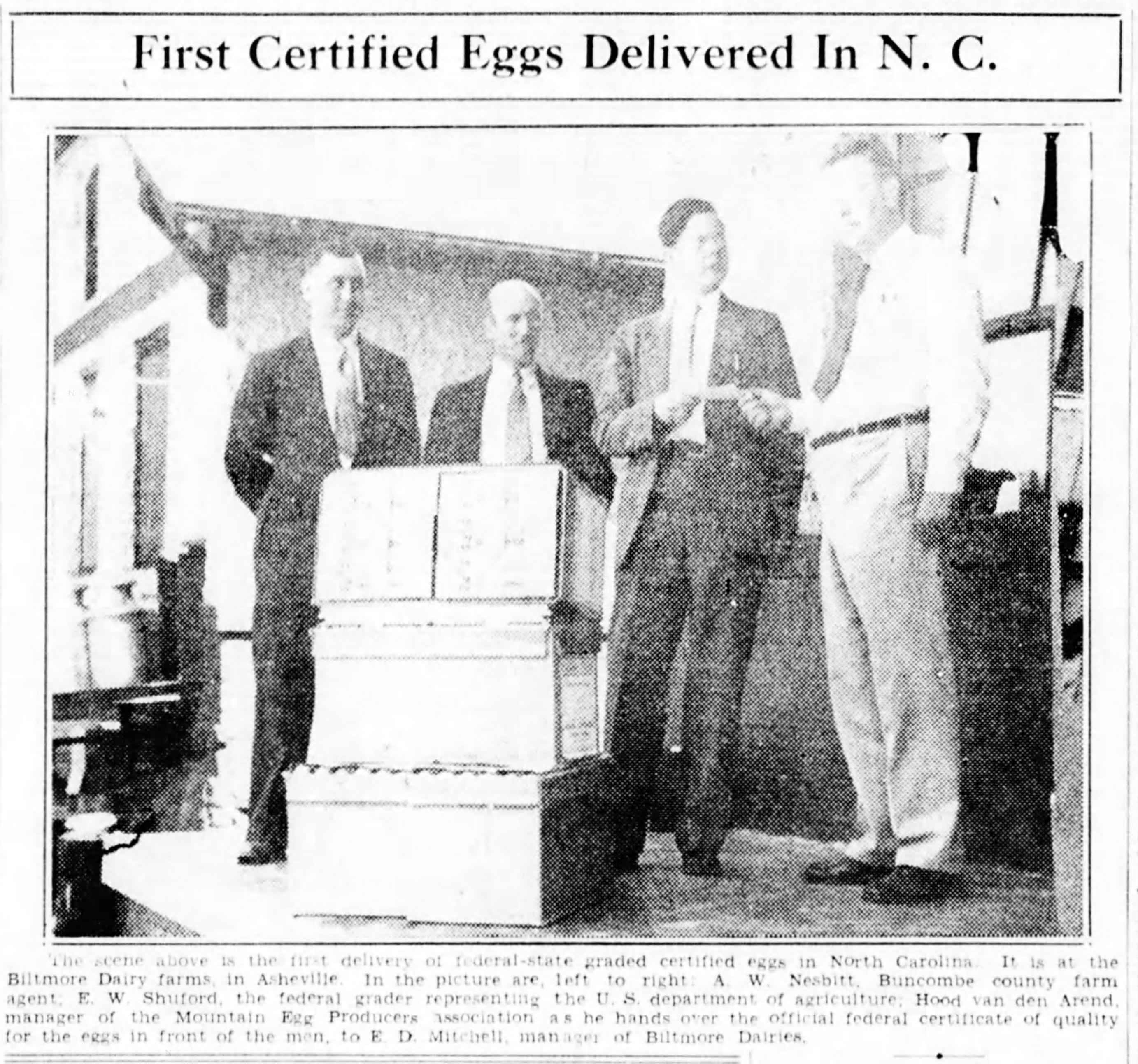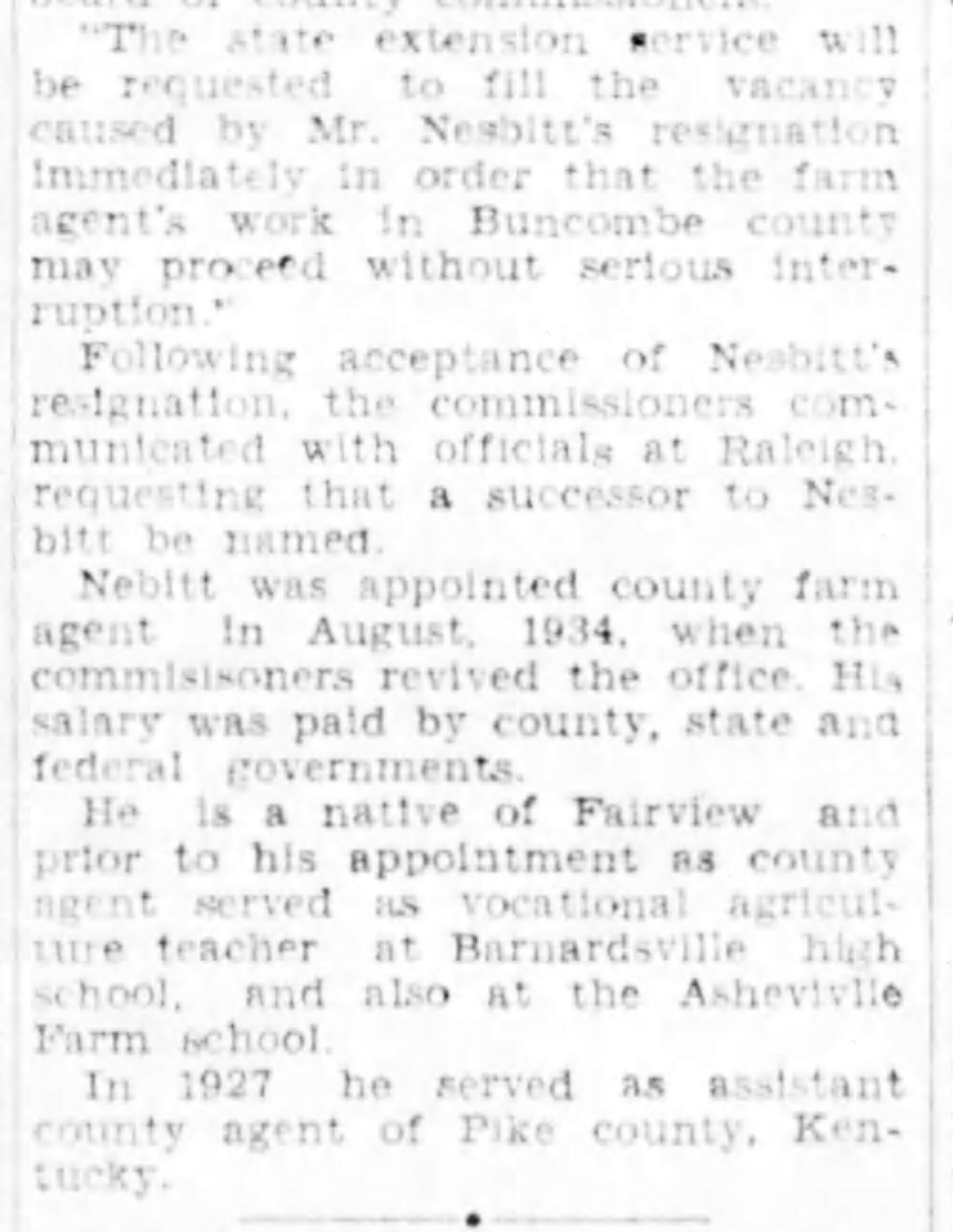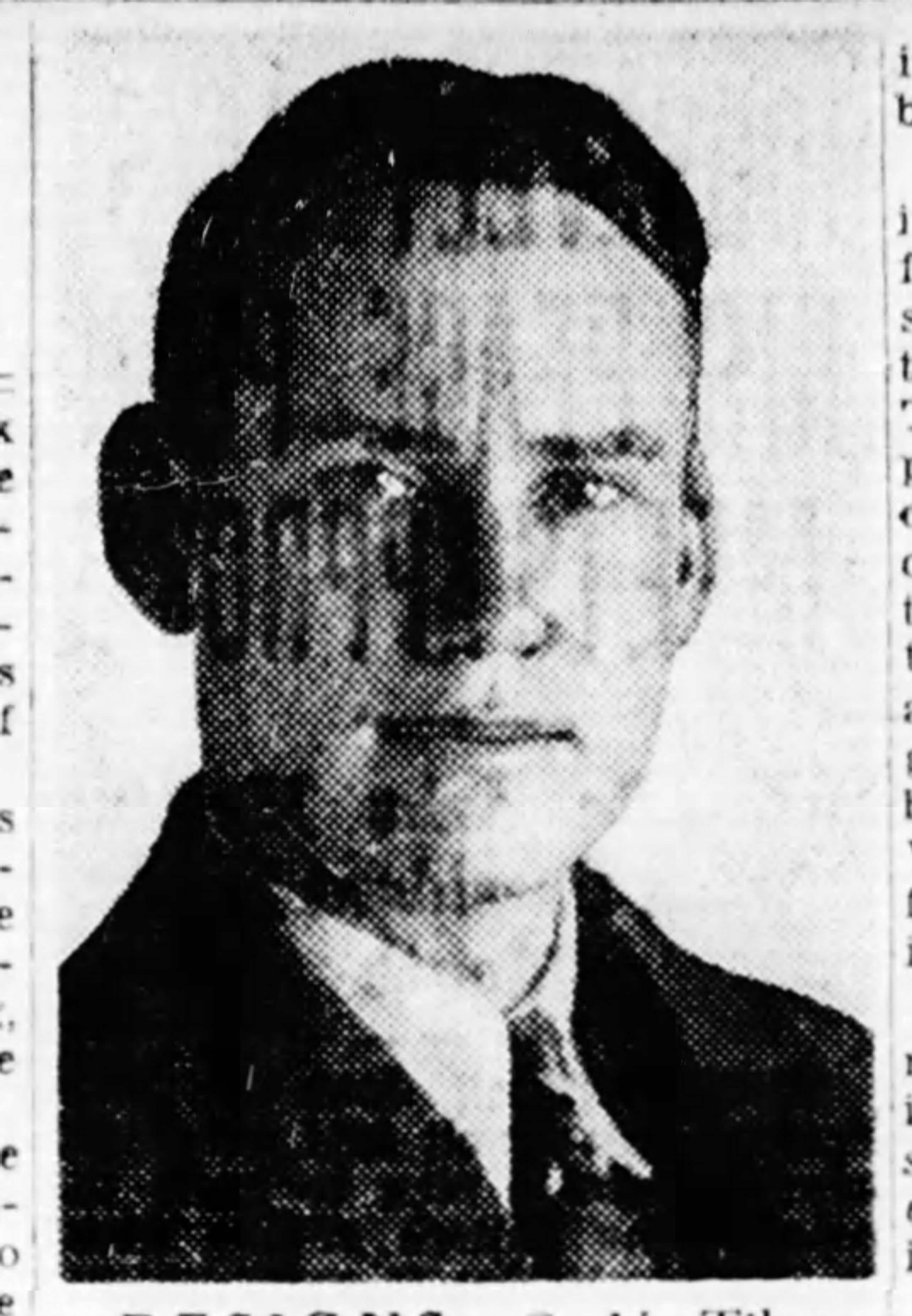Buncombe County Cooperative Extension : The 1930s
go.ncsu.edu/readext?1054621
en Español / em Português
El inglés es el idioma de control de esta página. En la medida en que haya algún conflicto entre la traducción al inglés y la traducción, el inglés prevalece.
Al hacer clic en el enlace de traducción se activa un servicio de traducción gratuito para convertir la página al español. Al igual que con cualquier traducción por Internet, la conversión no es sensible al contexto y puede que no traduzca el texto en su significado original. NC State Extension no garantiza la exactitud del texto traducido. Por favor, tenga en cuenta que algunas aplicaciones y/o servicios pueden no funcionar como se espera cuando se traducen.
Português
Inglês é o idioma de controle desta página. Na medida que haja algum conflito entre o texto original em Inglês e a tradução, o Inglês prevalece.
Ao clicar no link de tradução, um serviço gratuito de tradução será ativado para converter a página para o Português. Como em qualquer tradução pela internet, a conversão não é sensivel ao contexto e pode não ocorrer a tradução para o significado orginal. O serviço de Extensão da Carolina do Norte (NC State Extension) não garante a exatidão do texto traduzido. Por favor, observe que algumas funções ou serviços podem não funcionar como esperado após a tradução.
English
English is the controlling language of this page. To the extent there is any conflict between the English text and the translation, English controls.
Clicking on the translation link activates a free translation service to convert the page to Spanish. As with any Internet translation, the conversion is not context-sensitive and may not translate the text to its original meaning. NC State Extension does not guarantee the accuracy of the translated text. Please note that some applications and/or services may not function as expected when translated.
Collapse ▲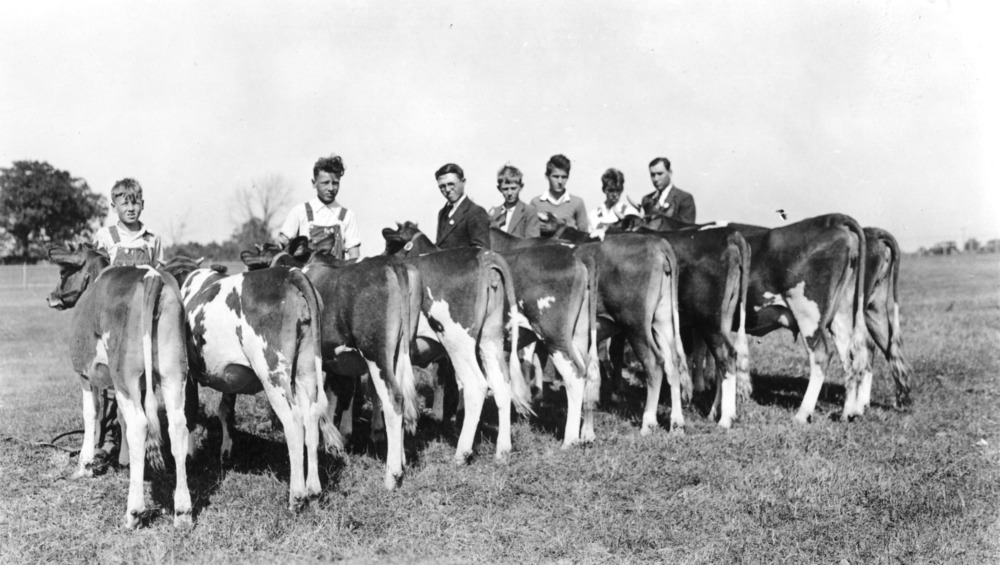
Buncombe County Guernsey Calf Club Attending the NC State Fair – 1935. 4-H Youth Development (UA023.008). Special Collections Research Center at NC State University Libraries
“So the family that owns a small farm now is indeed fortunate. Certainly the necessities of life can be had there. And when we have plenty to eat, something to wear, shelter, warmth, pure water and fresh air, all furnished by the great Creator, why should we not be happy?”
— L. Dale Thrash (Buncombe County Farm Agent), NC County Agent Annual Report, Buncombe County, 1932.
The 1930s in Western North Carolina, as well as in much of the nation, were harsh years for agriculture and family farms. The Great Depression decimated markets, bringing down the cost of crops like corn, tobacco, and apples, which were struggling from overproduction. Subsistence farming became more crucial as many families came to rely on what they could grow and produce themselves. Drought, soil erosion and economic woes came to the forefront of farmers’ concerns. Despite hard times, a glimmer of hope prevailed when New Deal programs initiated by president Franklin D Roosevelt provided some relief and a number of Buncombe County families benefited from these programs.
Cooperative Extension’s role changed during the Depression. More emphasis was placed on efficiency of the farm. Anti-poverty programs focused on family food production while Home Demonstration work focused on helping families make the most of limited resources.
1930
Nearly one-third of Buncombe County’s 420,480 land acres was dedicated to farming in 1930. The census recorded 3,895 farms totaling 129,702 acres, of which 96,466 acres were used for crops.
February 1 – WWNC Radio begins broadcasting “Farm Talks” by Dale Thrash. By the end of the year Buncombe County Cooperative Extension had delivered 40 radio programs enabling Extension to “reach many farmers who could not have been touched otherwise” keeping them “informed as to Agricultural Extension work, recommendations, and results.(1)”
February 10 through 14 – The “Live At Home” week is held at local schools. The “Live at Home” program, initiated in December, 1929 by North Carolina Governor O. Max Gardner, was designed to promote farm self-sufficiency and stabilize market prices and taught schoolchildren about the importance of growing crops, raising livestock, and conserving food.
March 15 – The Biltmore House opens to the public. Price of admission is $2.00 for adults and $1.00 for children under 12 years of age.
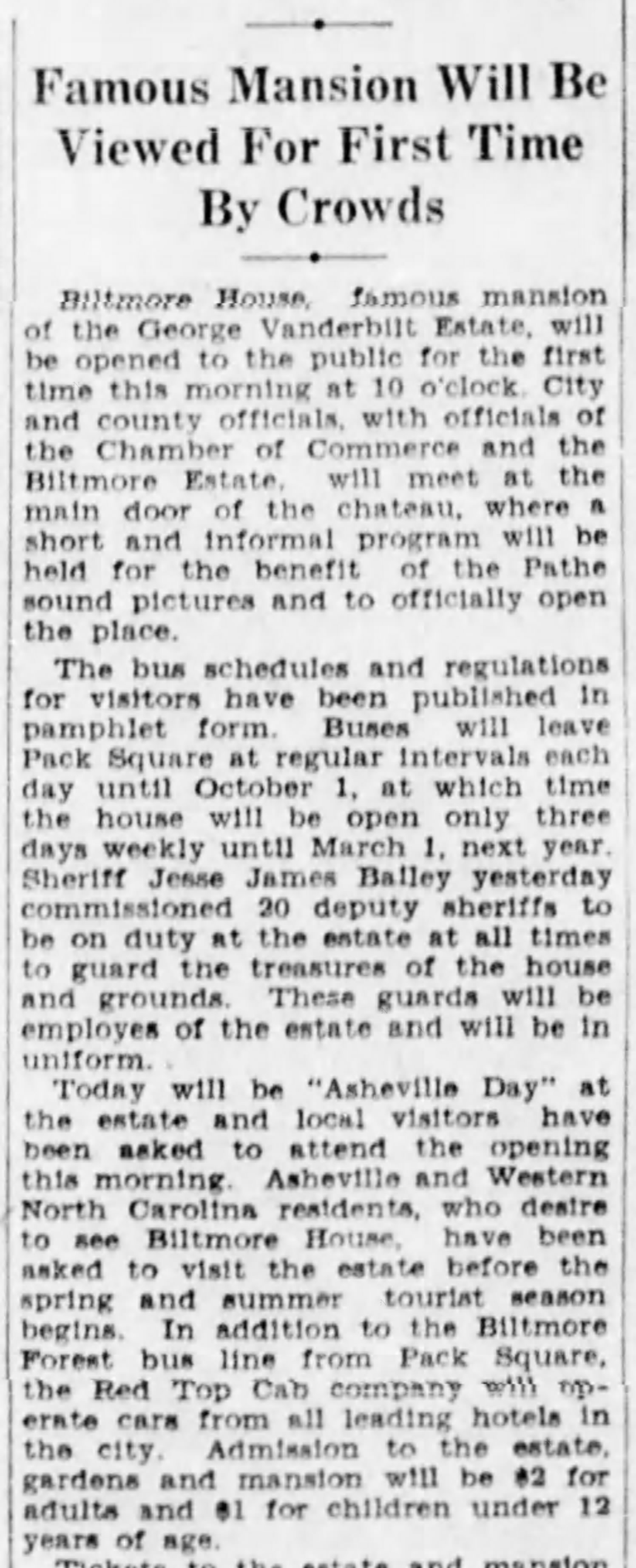
“Famous Mansion Will be Viewed for First Time by Crowds.” The Asheville Citizen newspaper. March 15, 1930. Page 1.
July – Buncombe County suffers its worst drought to date, reducing crops by 75 percent.
December 10 – The new Carolina Tobacco Corporation Tobacco Warehouse opens to the public. Located in downtown Asheville, just east of Biltmore Avenue close to the intersection of Valley and Beaumont Streets. The 60,000 square foot brick building, with hardwood floors and an arched ceiling, was also used as a convention center. Buyers on opening day included representatives from RJ Reynolds and the American Tobacco companies, among others.
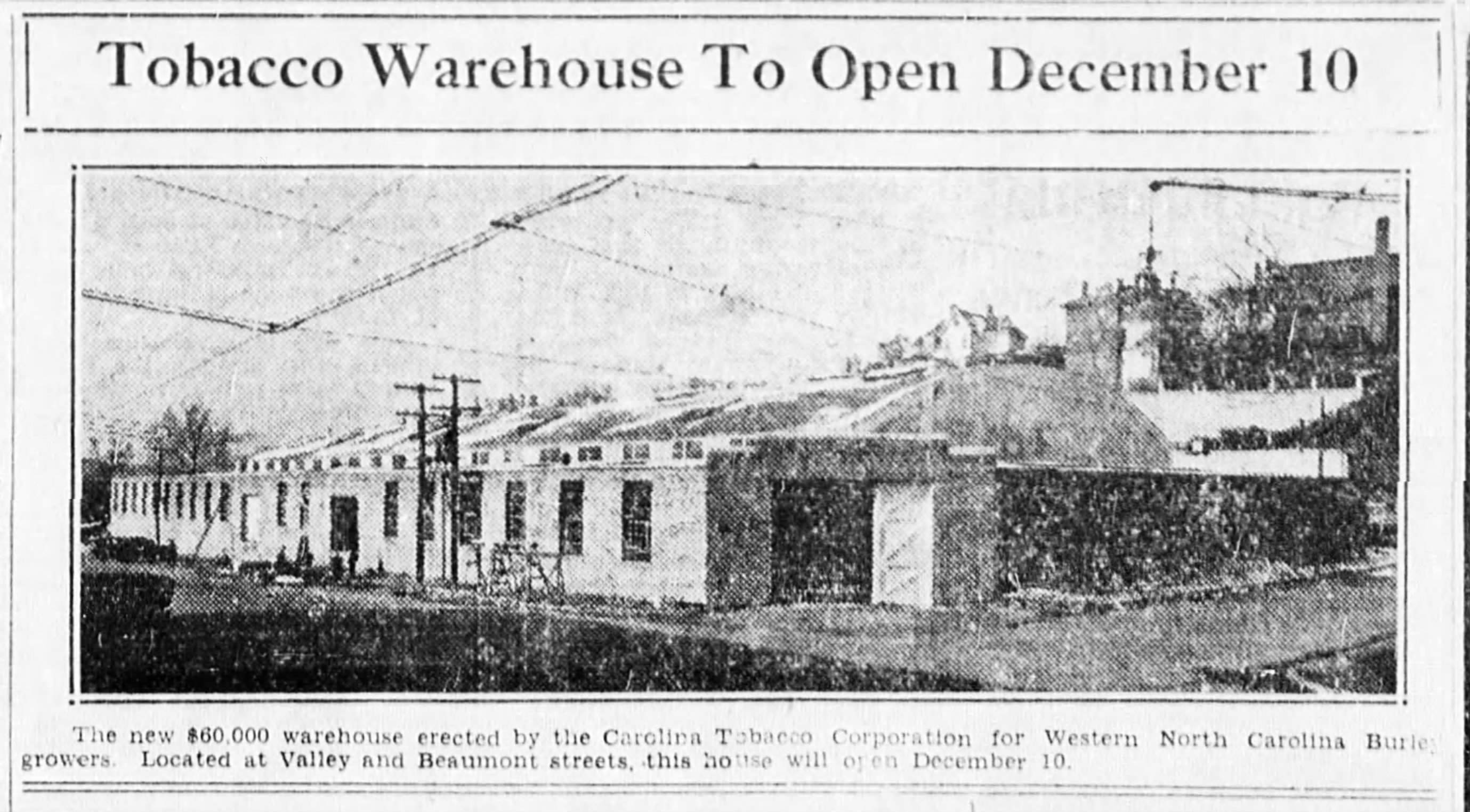
“Tobacco Warehouse to Open December 10.” The Asheville Citizen Times newspaper. November 30, 1930. Page 7.
1931
April – The Buncombe County community benefited from a collaborative effort between the Cooperative Extension and the Red Cross when nearly 800 garden seed packages, worth about $1,500 were distributed to families across the county. John Brown of Barnardsville was among the recipients, turning his seeds into a bountiful garden that fed his family and provided surplus for neighbors. He estimated the value of his garden produce at $50. On this basis, the seed distributed in the county was worth $40,000 in 1931 figures.
Paralleling this, in 2024, Buncombe County Cooperative Extension received and donated $21,000 worth of oat, rye, and triticale cover crop seed as well as $55,000 of clothing donations, given out to those most adversely affected by Hurricane Helene.
October 5 – Buncombe County Home Demonstration Agent Adna Edwards becomes a regular contributor the the Asheville Citizen newspaper’s “Mountain Farm Page,” submitting articles pertaining to home demonstration work and activities of the rural women of Buncombe County.
Home Demonstration work began in Buncombe County in 1914 with Rachel Hannomon the first documented Home Demonstration Agent. The Avery’s Creek “United Farm Women of America” club, started in 1915, changed their name to the “Avery’s Creek Home Demonstration Club” and remained active into the 1980s.
November 11 – The “Southern Dairies” plant opens at the intersection of Patton and Clingman Avenues in downtown Asheville, processing milk and ice cream products and boosting the local dairy economy.
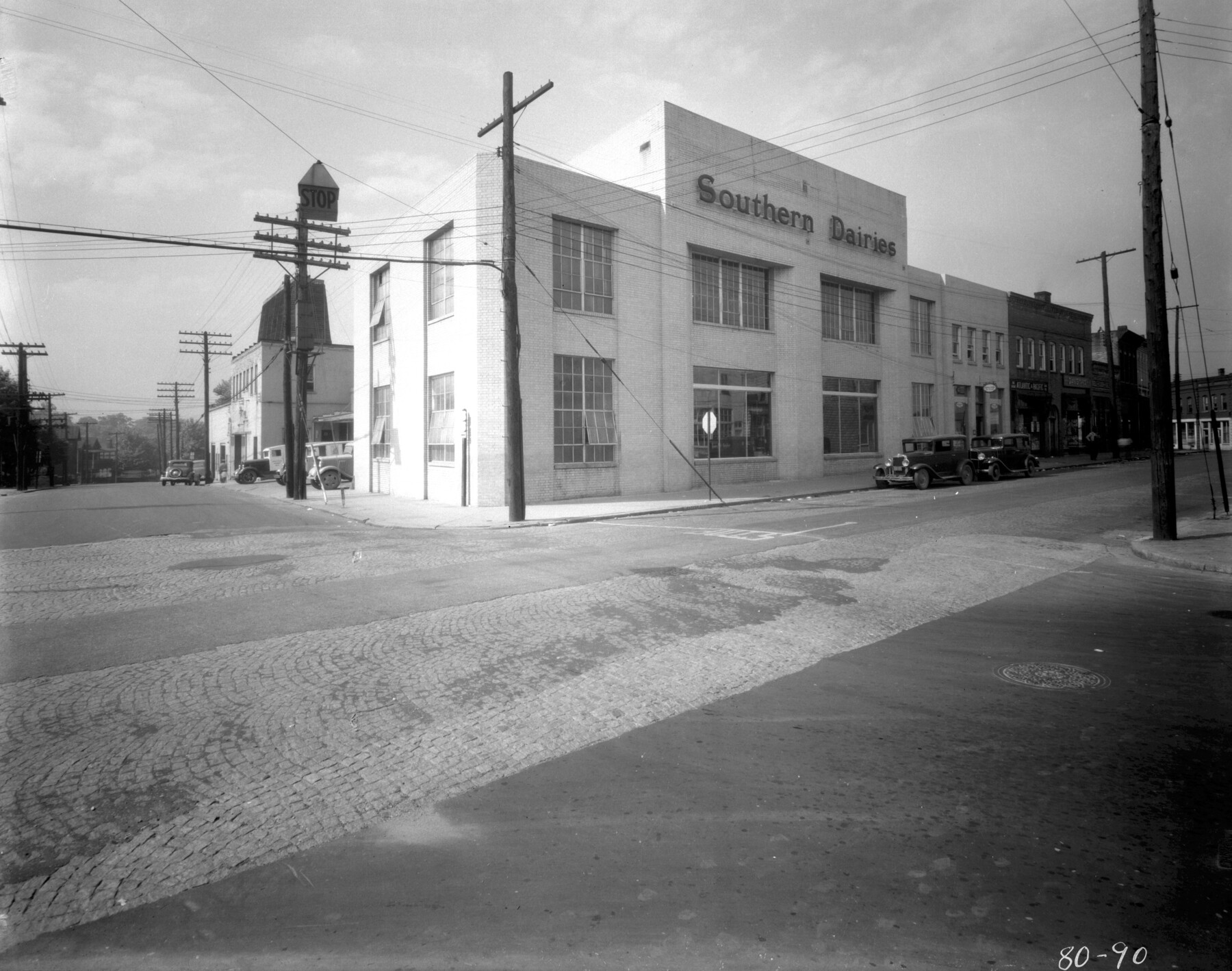
“Southern Dairies.” Unknown Date.Southern Appalachian Digital Collections.Western Carolina University and UNC Asheville.
1932
August 18 – Mrs. Jane McKimmon, State Home Demonstration Agent and Assistant Director of NC Extension Service, speaks at the 20th annual Mountain Test Farm Field Day in Swannanoa.
Jane Simpson McKimmon was born November 13, 1867, in Raleigh, North Carolina and graduated from William Peace Institute at age 16. In 1911, she was hired as the state’s first home demonstration agent, working with Girls’ Tomato Clubs and the subsequent women’s Home Demonstration Clubs that formed shortly after. Boys’ Corn Growing Clubs had been established by I.O. Schaub several years prior. Girls found the Tomato Canning Clubs an opportunity to earn income by selling the tomatoes they grew and preserved. After becoming Assistant Extension Director in 1925, McKimmon continued her education and became one of the first three women to earn a bachelors degree from NC State University in 1927. At age 60. She then earned her masters degree in 1929. At age 62. Other highlights from her long, storied career include serving on the State Council of National Defense during World War II then becoming the first woman inducted into the Agriculture Hall of Fame in 1966 and the 1976 creation of the Jane S McKimmon Center for Extension and Continuing Education at NC State University.

Jane S. McKimmonPhoto from “Celebrating 100 Years of Women at NC State University.https://www.lib.ncsu.edu/archivedexhibits/women/1920.htm
1933
March – Franklin Delano Roosevelt’s inauguration as the 32nd president in the midst of the Great Depression offered a glimmer of hope. Promising securities regulation, tariff reduction, farm relief, and government-funded public works, Roosevelt pledged decisive action. His famous “we have nothing to fear but fear itself” speech instilled confidence, and his “New Deal” programs provided relief, recovery, and reform. In Buncombe County, a number of families found work through programs like the Civilian Conservation Corps (CCC) and the Works Progress Administration (WPA).
March 31 – The CCC is officially established and the first of 66 CCC camps in North Carolina opens in the Pisgah National Forest in Transylvania County. Enrollees, young men between the ages of 18 and 25, contribute to conservation projects including fish and fawn rearing, road building and maintenance, trail improvement, and agricultural projects such as reforestation and forest conservation. Much of their work is still evident in the Pisgah National Forest today. Another CCC Camp, Camp F-8, performed similar work from their base camp in Barnardsville, Buncombe county.
May 12 – The Agricultural Adjustment Act (AAA) is signed into law by president Rooselvelt. This program offered federal subsidies to farmers who reduced their production of key crops such as wheat, corn, cotton, rice and tobacco, all in order to raise market prices for these crops. In the short term, the plan proved beneficial, but in 1936 the act was struck down by the US Supreme Court, deemed unconstitutional due to the tax on processors to fund the subsidies.
May 18 – The Tennessee Valley Authority is established by the administration of president Franklin D. Rooselvelt. Created to provide employment and economic growth to the Appalachian communities of the Tennessee River Valley, including Western North Carolina, by emphasizing efficient use of natural resources and flood control. Projects in Western North Carolina included construction of the Apalachia, Chatuge, Fontana, and Hiwassee dams and reservoirs. Projects in Buncombe County included rural electrification, soil erosion prevention through crop growing techniques, and soil surveys and testing services.
June 23 – At 2:00 p.m., the first livestock auction began at the newly constructed Asheville Livestock Yards on Riverside Drive. This venture, launched by Madison County farmer R.R. Ramsey and a group of East Tennessee associates, had gained approval from county agricultural agents and the 5-10 Year Farm Program Committee, and the support of the Asheville Chamber of Commerce. The market’s aim was to elevate the Western North Carolina livestock industry and benefit local mountain farmers. Asheville’s location as the region’s central trading post, proved successful. By the end of 1933, farmers from every WNC county, as well as those from Tennessee and South Carolina, had participated in the sales, generating approximately $300,000 ($7.28 million in today’s dollars). This thriving market served the region for 20 years, until a new, up to date facility was built across the French Broad River in 1953. That site, now home to New Belgium Brewery, continued as a livestock market until closing in 2004.
1934
August – A.W. Nesbitt, of Barnardsville, is appointed to the Buncombe County Farm Agent’s office.
Andrew Wilson Nesbitt, born in Fairview, Buncombe County on October 19, 1904, served as Buncombe County Farm Agent until 1938. A Berea College agriculture graduate, Nesbitt’s career included roles as assistant county agent in Pike County, Kentucky, and farm supervisor at the Asheville Farm School. He earned his master’s degree from NC State University in 1929.
1935
April – North Carolina has 521 4-H clubs in 91 counties with 22,309 members: 5,591 boys and 15,818 girls.
September 11 – Construction begins on the 469 mile Blue Ridge Parkway, a scenic highway connecting the Shenandoah National Park in Virginia to the Great Smokies National Park in North Carolina and Tennessee.
October – Ten boys from the Buncombe County 4-H Guernsey Calf Club showed their livestock at the 1935 North Carolina State Fair. Their efforts earned them 13 ribbons, including a first-place win as a county entry, which garnered a total of $140 in prizes (equivalent to about $3,200 today).
1936
For the first time, residents of all 100 counties in North Carolina have access to Extension farm demonstration agents.
March 2 – The first meeting of the North Carolina Farm Bureau is held in Greenville, North Carolina. Formed in 1936 as a chapter of the American Farm Bureau, the North Carolina Farm Bureau began as a grassroots organization of farmers coming together as a unified voice on agricultural issues. The NC Farm Bureau continues to serve the farmers of North Carolina today through advocacy, leadership development programs, scholarships, and a variety of other programs for people of all ages.
1937
June – The USDA, NCDA, and the Mountain Egg Producers Cooperative Association begin a federal egg grading program in North Carolina. Similar to programs in other states, the first delivery of certified eggs in North Carolina was made to the Biltmore Dairy Farms.
December – A.W. Nesbitt resigns from the Buncombe County Farm Agent position under the advice of the Buncombe County Board of Commissioners. Investigated for rumors of entering a calf into the state fair under the name of a 4-H Club member and winning a prize, thus violating NC State Fair rules. A new agent is immediately searched for.
1938
January – C.Y. Tilson begins his duties as Buncombe County’s new Farm Agent.
Twenty-seven years old when hired as Buncombe County Farm Agent, Tilson graduated from NC State University in 1933 and immediately went to work as a farm agent in Hyde County, NC. A native of Mars Hill, Madison County, Tilson served as our county’s Farm Agent until 1944.
As the 1930s drew to a close, the nation found itself still recovering from the economic depression while also facing uncertainty over the events unfolding in European nations. Hitler’s advancement through Europe left many Americans questioning our involvement in other countries’ affairs. The 1937 explosion of the Hindenburg and the 1938 War of the Worlds broadcast had many already on edge when on September 1, 1939, Hitler invaded Poland, marking the beginning of World War II.
Closer to home, construction of the Blue Ridge Parkway and the Great Smoky Mountains National Park brought an influx of modern tourism to the area. Downtown Asheville remained a premier destination for many to enjoy our natural scenery. Hometown author Thomas Wolfe, forever known for his novel Look Homeward, Angel, died prior to the end of the decade at age 38, leaving a number of his works to be published posthumously. While agriculture continued to play a major role in Buncombe County’s economy, manufacturing provided stable wages for many in our area with Champion Fibre Company in Canton, American Enka Corporation in Candler, and the Beacon blanket mill in Swannanoa serving as key players.
The 1940s would bring unprecedented change to American households and N.C. Cooperative Extension programs in the combined effort to achieve victory in war. Join us in April as we explore the 1940s and the accomplishments of Cooperative Extension work in Buncombe County.
Follow our history all year long as we explore each decade of North Carolina Cooperative Extension work in Buncombe County:
N.C. Cooperative Extension, Buncombe County Center: Beginnings to 1920
N.C. Cooperative Extension, Buncombe County Center: The 1920s
Sources:
(1) Thrash, L.D. North Carolina State University, Raleigh, North Carolina, 1930, pp. 3, NC Agricultural Extension Service Annual Narrative Report, Buncombe County.
“The 1930s.” Tennessee Valley Authority , Tennessee Valley Authority,
Accessed 16 Feb. 2025.
“4-H Clubs Have Membership of 22,309 in NC.” The Asheville Citizen, 22 Apr. 1935, pp. 8,
Accessed 16 Feb. 2025.
“A.W. Nesbitt Resigns as County Farm Agent.” The Asheville Citizen Times, 5 Dec. 1937, pp. 1–2,
Accessed 16 Feb. 2025.
“Appropriation Is Dropped by Commissioners.” The Asheville Times, 20 June 1933, pp. 1,
Accessed 16 Feb. 2025.
“Approximately $300,000 Paid to Farmers at Livestock Sales Here.” The Asheville Citizen Times, 12 Nov. 1933, pp. 12,
Accessed 16 Feb. 2025.
“Biltmore House Will Open to Public Today.” The Asheville Citizen, 15 Mar. 1930, pp. 1,
Accessed 16 Feb. 2025.
Brandl, Mary Katherine. “Live at Home Week.” The Sunday Citizen, 9 Feb. 1930, pp. 8,
Accessed 16 Feb. 2025.
“Buncombe Crops Hit Hard by Lack of Rain.” The Asheville Times, 5 Aug. 1930, pp. 2,
Accessed 16 Feb. 2025.
“Civilian Conservation Corps Established.” North Carolina Department of Natural and Cultural Resources,
Accessed 16 Feb. 2025.
“Club Women Urge Retention of Home Agent in Buncombe.” The Asheville Citizen Times, 27 Aug. 1933, pp. 4,
Accessed 16 Feb. 2025.
“Commissioners of County Meet Today.” The Asheville Citizen, 10 Nov. 1919, pp. 3,
Accessed 16 Feb. 2025.
Coulter, Adam. “Avery’s Creek United Methodist Church – Celebrating 150 Years.” Unpublished document. 2019.
Dobbs, Chris. “Agricultural Adjustment Act – New Georgia Encyclopedia.” New Georgia Encyclopedia, 29 Jan. 2016
Edwards, Adna. “Pickling Now Going On in Buncombe’s Clubs.” The Asheville Citizen, 5 Oct. 1931, pp. 6,
Accessed 16 Feb. 2025.
Inlow-Hatcher, Tricia. “Jane S. Mckimmon Pioneered Think and Do.” Continuing and Lifelong Education, North Carolina State University, Jan. 2024,
Moore, Justin. “Extension History and Milestones.” NC State Extension News, North Carolina State University, 2023,
“Nesbitt Aids AAA Tobacco Program Here.” The Asheville Citizen Times, 4 Dec. 1934, pp. 10,
Accessed 16 Feb. 2025.
“New Southern Dairies Plant Ready to Open.” The Asheville Times, 10 Nov. 1931, pp. 10–12,
Accessed 16 Feb. 2025.
“North Carolina Farm Bureau Records, 1936-2012.” NC State University Libraries Collection Guides, North Carolina State University,
Accessed 16 Feb. 2025.
“Plans for Opening Tobacco Warehouse on Dec. 10 Are Going Forward.” The Asheville Citizen, 2 Dec. 1930, pp. 3,
Accessed 16 Feb. 2025.
“Ribbons Won by Buncombe Boys at State Fair.” The Asheville Citizen, 23 Oct. 1935, pp. 7,
Accessed 16 Feb. 2025.
“State Experts to Attend and Make Speeches.” The Asheville Citizen Times, 7 Aug. 1932, pp. 3,
Accessed 16 Feb. 2025.
Thrash, L.D. North Carolina State University, Raleigh, North Carolina, 1931, pp. 12, Annual Report of L.D. Thrash, County Agent, Buncombe County, State of North Carolina,
Accessed 16 Feb. 2025.
“Tilson Assumes New Duties as County Agent.” The Asheville Times, 3 Jan. 1938, pp. 12,
Accessed 16 Feb. 2025.
“Tobacco Warehouse to Open December 10.” The Asheville Citizen Times, 30 Nov. 1930, pp. 7,
Accessed 16 Feb. 2025.
Williams, Shane. “‘Live at Home’ Program – North Carolina History.” North Carolina History Project, John Locke Foundation, 17 Feb. 2024,
“WWNC Will Broadcast Series of Farm Talks.” The Asheville Citizen, 31 Jan. 1930, pp. 10. Newspapers.Com,
Accessed 16 Feb. 2025.






